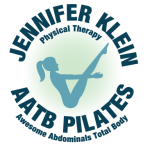If you’re already taking Pilates classes, great! You’re already on the path to a stronger core, stronger back, and long, lean muscles. With that in mind, we want to inform everyone about our other services that may put you on the right track for your fitness goals. At Jennifer Klein Physical Therapy, we offer cupping and needling, which may be more benefits than you realize; you may be surprised to learn that cupping may be able to help reduce your cellulite!
Causes of Cellulite
Cellulite is mainly caused because of a genetic condition which causes fluid retention, an inefficient lymphatic drainage system and weak veins that result in ineffective blood circulation. Hormonal imbalances can also cause the development of more fat cells. These factors result in the fat cells lying under the skin converting into cellulite. This cellulite pushes up the fascia connecting the skin to the underlying muscle and creates the ungainly appearance of the dimpled, orange peel look on the skin that is a sign of cellulite.
How Cupping Therapy Helps
When cupping is performed, the cups are applied creating a suction. Cupping is a lifting technique and can be done both statically and dynamically(gliding). Suction is applied on the skin, the reverse pressure helps the cellulite to break up. Blood circulation is stimulated, and the fat and toxins that are released are moved to the lymph drainage network. Since cupping therapy also promotes a more efficient drainage of the lymph nodes, these toxins are quickly eliminated from the body. Cupping is also known to ease the fascia connecting the skin and muscle. In this way, fluid build-up is reduced and the skin develops a more cellulite-free healthy appearance.
Other Advantages of Cupping
While conventional weight loss methods do not work on specifically targeted areas of the body, cupping is known to help in spot reduction as well. Patients can request treatment to remove sagging buttocks, saddlebags, flabby inner thighs and any other love handles. Done frequently, the improved circulation removes the “orange peel” cellulite texture, leaving the fibrous tissue soft, healthy and flexible, keeping skin looking more youthful. Cups are simply applied on the areas of the patient’s body that need treatment. Since each cupping session can be customized for maximum effect on every individual patient, the therapy provides many other positives. Patients have reported the detoxification of the body and a firmer, tighter appearance of the skin. The body is more shapely and better blood circulation results in the appearance of a healthier looking skin.
What About the Marks?
When injuries occur deep in the muscle, bleeding often occurs causing deep bruises. There will also be edema in the area involving the coagulation of sticky proteins. The combining presence of these elements usually results in stagnation of circulation to the area – resulting in pain, dysfunction, and chronic conditions.The vacuum formed by cupping draws up the old non-circulating stagnant blood and sticky fluids from the area, bringing them up to the surface and away from the injury so that healthy free circulation can be restored to the affected area, thus creating space for oxygen, living cells and nutrients for faster recovery. Where there is dead, static blood, lymph, cellular debris, pathogenic factors, and toxins present in the body, cupping can leave marks which indicates that the stagnation or disease has been moved from the deeper tissue layers to the surface. These should not be misinterpreted as damage; rather they are the result of debilitating agents being drawn to the surface.


Recent Comments